How the size and quality of the potato crop depend on the fertilizers applied
The key to a good potato harvest is fertilization on time. In combination with other agronomic measures, timely feeding will ensure the collection of a large number of healthy tubers that can be stored until the next harvest.
Before emergence, young potato sprouts receive nutrients from the tubers. With the appearance of the first leaves, plants begin to absorb nutrients from the soil and from that moment fertilizers for potatoes, introduced in advance into the soil, will be very useful. The development of the plants and, ultimately, the size of the crop will depend on this.
Basic principles
One of the main crops that provide good nutrition for people is potatoes. The tubers of this common vegetable rank fifth in the human diet (after wheat, rice, corn and barley). Potatoes are used for technical processing. It is used to produce starch, glucose, alcohol, chips. Production waste is used as animal feed.
The key to a high harvest is nutrients. To do this, you need to timely prepare the soil and apply fertilizers for potatoes, taking into account the characteristics of this crop.
- When planning top dressing, it should be borne in mind that different varieties react differently to top dressing. Early species consume nutrients intensively during the short growing season. Therefore, under them mainly mineral fertilizers (tuk) are applied in an easily digestible form and in a sufficiently large amount.
- Late varieties consume about the same amount of nutrients as early varieties. But their growing season is much longer, and the plants have a fairly low concentration of "vitamins", which are replenished due to humus processes in the soil. Late varieties absorb nutrients from organic matter well. Therefore, as a fertilizer for potatoes in early spring or late autumn, peat is introduced into the soil, manure, straw or compost.
- In potatoes, the root system is underdeveloped, therefore, this crop is sensitive to the composition and density of the soil. At the same time, excessive application of mineral fertilizers can lead to the accumulation of nitrates in tubers and a decrease in their quality.
- It is possible to significantly increase the size of the harvest by introducing fresh manure during late autumn plowing (digging) of the soil. However, using fresh organic matter to fertilize potatoes can cause potato scab disease. Therefore, it is recommended to use composts.
- The best result after fertilization under potatoes is achieved by a competent combination of mineral and organic substances.
There is no need to apply organic fertilizers every year, as they provide nutrition for the potatoes for several years.
At what time, in what quantities and in what way should fertilizers be applied
The calculation of the amount of this or that fertilizer is based on how many of these or those substances are consumed by potatoes to form a full-fledged crop. To get 100 kg of tubers, you need about 0.5 kg of nitrogen, 0.2 kg of phosphoric acid and about 1 kg of potassium oxide, which this root crop consumes from the soil.
A slight increase in the amount of potassium and nitrogen with a constant volume of phosphoric acid will lead to an increase in the mass of individual tubers, but the total number of tubers will remain the same.If we do the opposite - increase the dose of phosphoric acid without changing the proportion of potassium and nitrogen, then the number of tubers under the bush will increase, while the mass of each of them will remain unchanged or decrease. This method is sometimes used to obtain seed.
Nutrients will be poorly absorbed if there is not enough moisture and air in the soil intended for planting potatoes, which means that fertilization is ineffective. Therefore, increasing the level of nutrients in the soil, one should not forget about carrying out agrotechnical measures (loosening, weeding and watering).
Besides root nutrition, it is very important to ensure that sufficient carbon is supplied through the leaves. Carbon dioxide is released by microorganisms during the decomposition of organic matter in the soil. therefore organic fertilizers (compost, humus, straw, manure, etc.) must be applied under the potatoes to ensure high yields.
Organic fertilizing is able to almost completely provide plants with the necessary nutrients for the entire growing season. In addition, humus improves the structure of the soil, making it looser and more breathable. If there is not enough compost or manure to spread over the entire area, organic fertilizers are applied directly to the hole when planting potatoes. In organic matter, you can add wood ash (at the rate of a tablespoon per well) and mineral fat.
Organic fertilizerit is applied under potatoes during autumn plowing. Fresh straw is brought in one year before planting, as it must have time to overheat.
If organic matter was not introduced before planting, then to provide the potatoes with the necessary nutrients, you can use liquid fertilizing, when organic fertilizers (mullein - 1:10, bird droppings - 1:20) are diluted with water and superphosphate is added to the solution.
It should be remembered that when making compost or humus, plants in the first year take from it about 25% of nitrogen, about 60% of potassium and up to 50% of phosphorus. Therefore, in subsequent years, it is necessary to provide for the introduction of the required amount of inorganic dressings.
When fertilizer is applied locally (in the hole) when planting potatoes, then its consumption is reduced by more than 25%.
If any mineral fertilizer is used for feeding, then it must be applied in the amount that is necessary to feed the potatoes. Plants should not be "overfeeded", as this causes the accumulation of nitrates in the tubers, which is harmful to human health.
Thus, the best plant nutrition, and, accordingly, obtaining the maximum yield of high-quality tubers can be ensured through the integrated use of organic and mineral fertilizers.
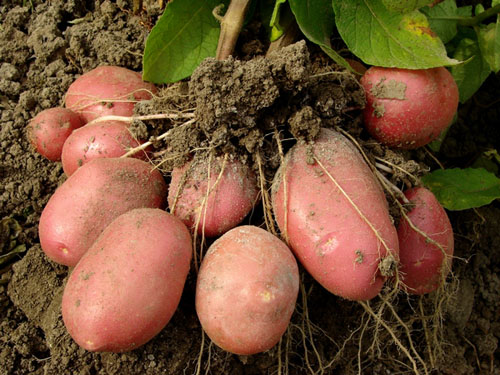
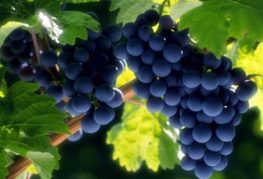
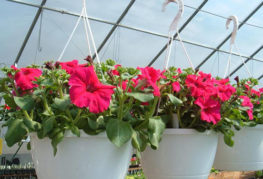
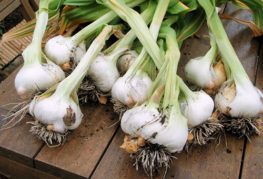

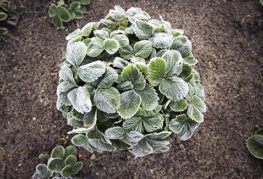
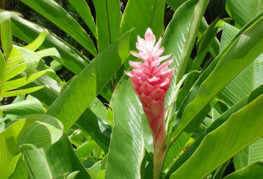
After all this chemistry, the liver will jump out, and then ... ...